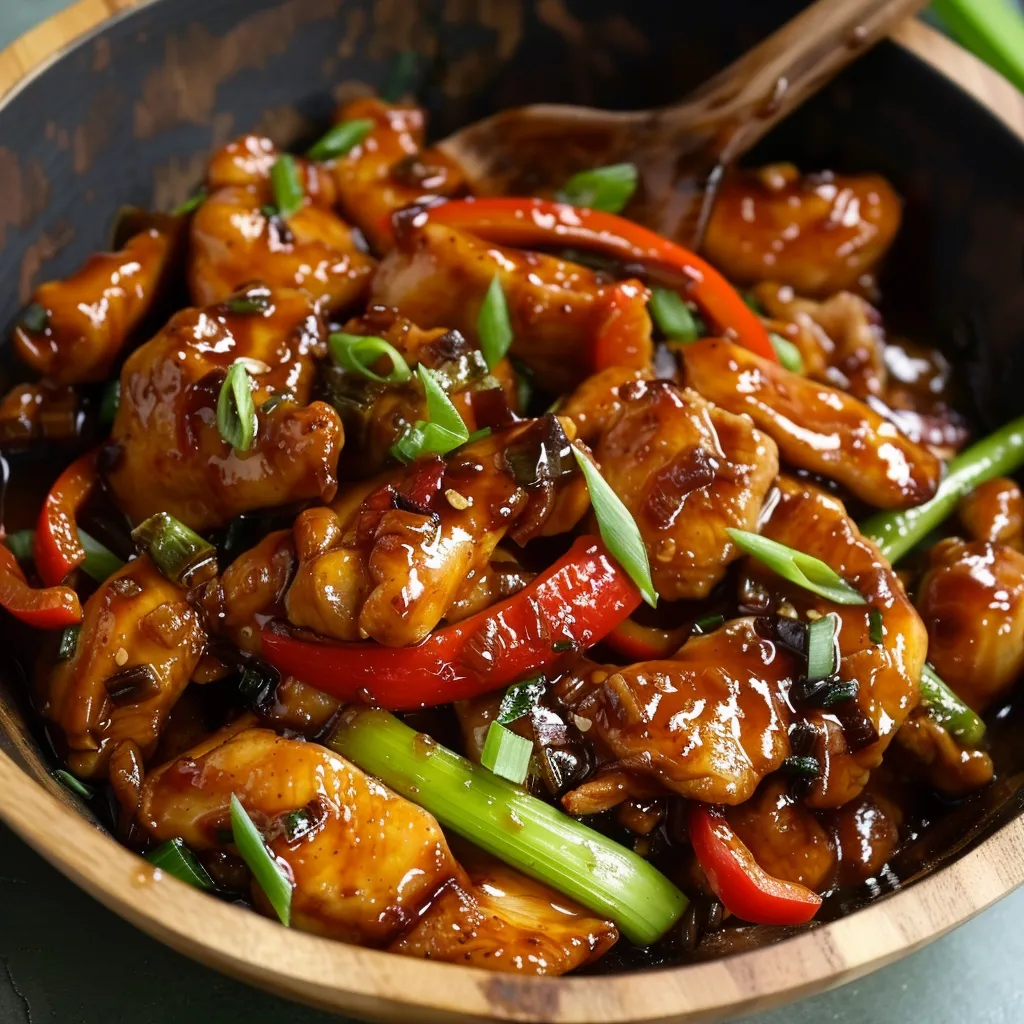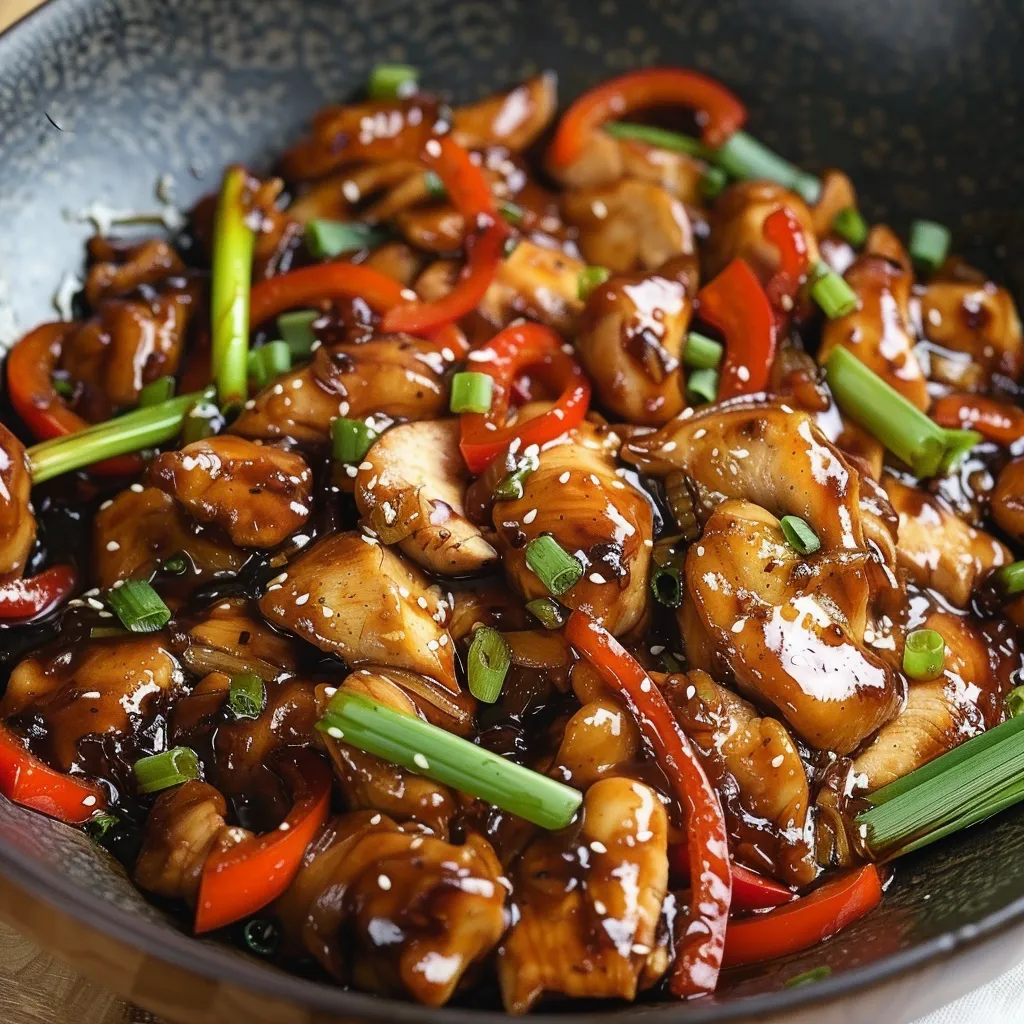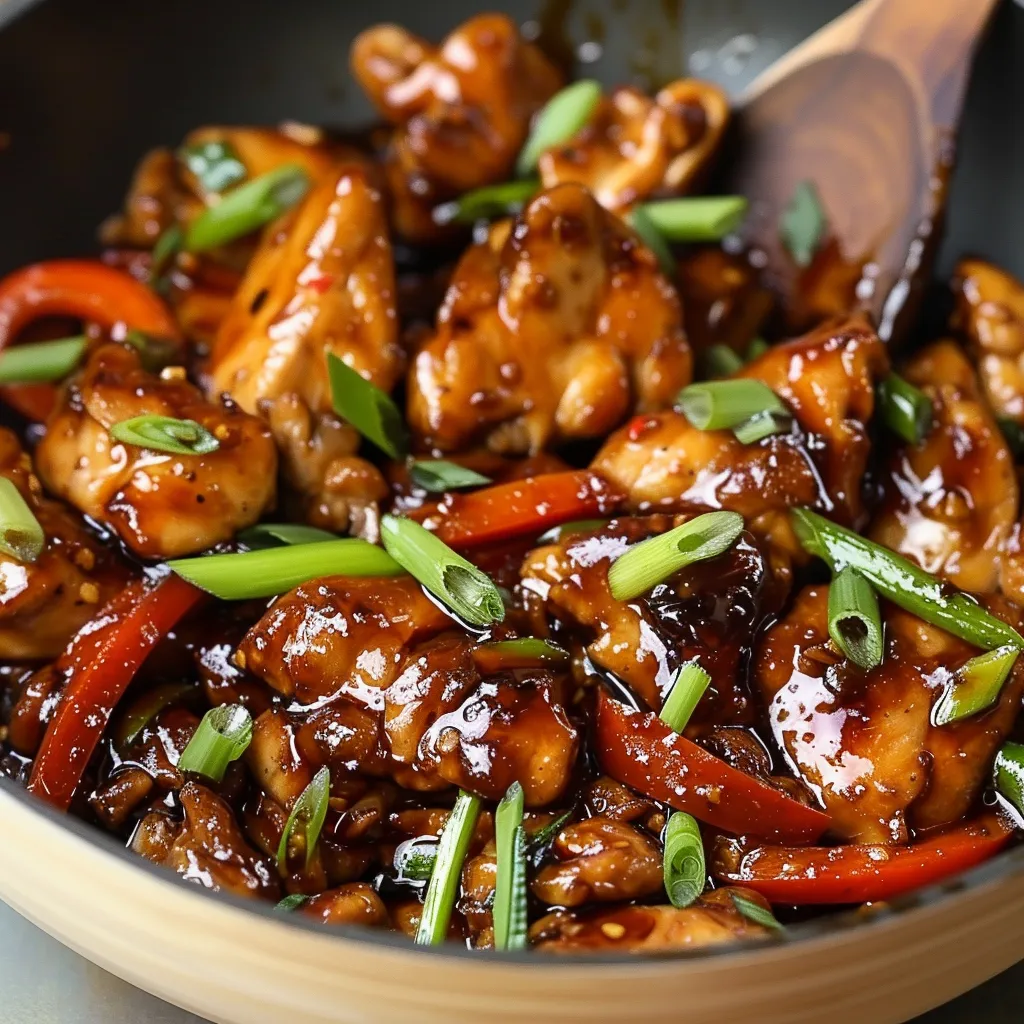 Pin it
Pin it
Tender chicken pieces glazed in a rich, garlicky sauce create an authentic Chinese dish that rivals any restaurant version. The secret lies in achieving the perfect balance of savory, sweet, and aromatic flavors while maintaining the chicken's crispy exterior and juicy interior.
Throughout my years of cooking Chinese cuisine, I've discovered that marinating the chicken in dark soy sauce not only adds flavor but helps achieve that beautiful golden-brown color.
Essential Components
- Boneless chicken thighs: Should be fresh with a pinkish hue and slight marbling
- Dark soy sauce: Provides deep color and rich umami base notes
- Light soy sauce: Adds saltiness without darkening the sauce too much
- Fresh garlic cloves: Should be firm and heavy for their size
- Young ginger root: With thin, bright skin offers the most vibrant flavor
- High-quality sesame oil: With a rich, nutty aroma
- Cornstarch: Must be pure without any additives for proper thickening
- Rice vinegar: Should be clear and fresh-smelling
- Premium oyster sauce: Adds depth and complexity
- Bell peppers: Should be firm and glossy
- Green onions: Must be crisp with bright, unblemished stalks
Kitchen Choreography
- Marination Magic:
- Combine chicken with dark soy sauce and cornstarch, massaging gently to ensure even coating. Allow meat to rest at room temperature, letting the marinade penetrate while preparing other ingredients. This step creates a protective coating that seals in moisture during cooking.
- Stir-Frying Success:
- Heat wok until wisps of smoke appear, indicating perfect temperature. Add oil in a thin stream around the edges, allowing it to heat until shimmering. Cook chicken in small batches, arranging pieces with space between them for proper browning.
- Sauce Symphony:
- Combine sauce ingredients in precise order, starting with liquids then adding cornstarch last. Whisk until completely smooth, ensuring no lumps remain. The sauce should coat the back of a spoon when properly mixed.
- Final Harmony:
- Return chicken to wok with sauce, tossing continuously to create an even glaze. Watch for the sauce to thicken and become glossy, indicating proper consistency.
 Pin it
Pin it
My Chinese grandmother taught me to always add a splash of hot oil to the sauce just before combining with the chicken - this technique creates an extra silky texture.
Perfecting Your Plating
Create a restaurant-worthy presentation by mounding fluffy jasmine rice in a deep bowl, then arranging the glossy chicken and vegetables artfully over top. Garnish with thinly sliced green onions cut on a sharp diagonal, and sprinkle with toasted sesame seeds for visual appeal. Consider adding a few fresh cilantro leaves and red chili slices for color contrast. The sauce should pool slightly around the base, making it easily accessible for mixing with each bite.
Versatile Variations
Transform this classic dish by incorporating different elements. For a spicier version, add dried red chilies or doubanjiang (spicy bean paste). Create a Cantonese-style adaptation by including bamboo shoots and water chestnuts for extra crunch. For a lighter version, incorporate snow peas and baby corn. Consider adding mushrooms like shiitake or wood ear for an earthy dimension.
Storage Solutions
Store leftover stir-fry in an airtight container, keeping rice separate to maintain optimal texture. The dish will keep for up to three days in the refrigerator. When reheating, add a splash of chicken broth to restore the sauce's consistency. For best results, reheat in a wok or skillet rather than microwave to maintain the vegetables' texture. If freezing, store sauce separately from chicken and vegetables.
 Pin it
Pin it
Chinese garlic chicken embodies the essence of home-style Chinese cooking - quick, flavorful, and satisfying. Through countless preparations, I've found that timing is everything; the rapid succession of adding ingredients creates layers of flavor that make this dish memorable. The combination of tender chicken, crisp vegetables, and savory sauce creates a meal that's both comforting and exciting. Whether served for a quick weeknight dinner or as part of a larger Chinese feast, this dish never fails to bring people back for seconds.
Frequently Asked Questions
- → Can I use chicken breast instead of thighs?
- Yes, you can use chicken breast, but thighs stay more tender and juicy. If using breast, reduce cooking time slightly to prevent drying.
- → How can I make this dish less spicy?
- Reduce or omit the Sriracha sauce in the garlic sauce mixture. You can also add a bit more brown sugar to balance the heat.
- → Can I make the sauce ahead of time?
- Yes, you can mix the sauce ingredients up to a day ahead and store in the refrigerator. Just give it a good stir before using.
- → Why coat the chicken in cornstarch?
- Cornstarch creates a light, crispy coating on the chicken when fried and helps thicken the sauce when combined.
- → What vegetables can I add to this dish?
- You can add broccoli, snap peas, carrots, or mushrooms. Just add firmer vegetables earlier in the cooking process.
